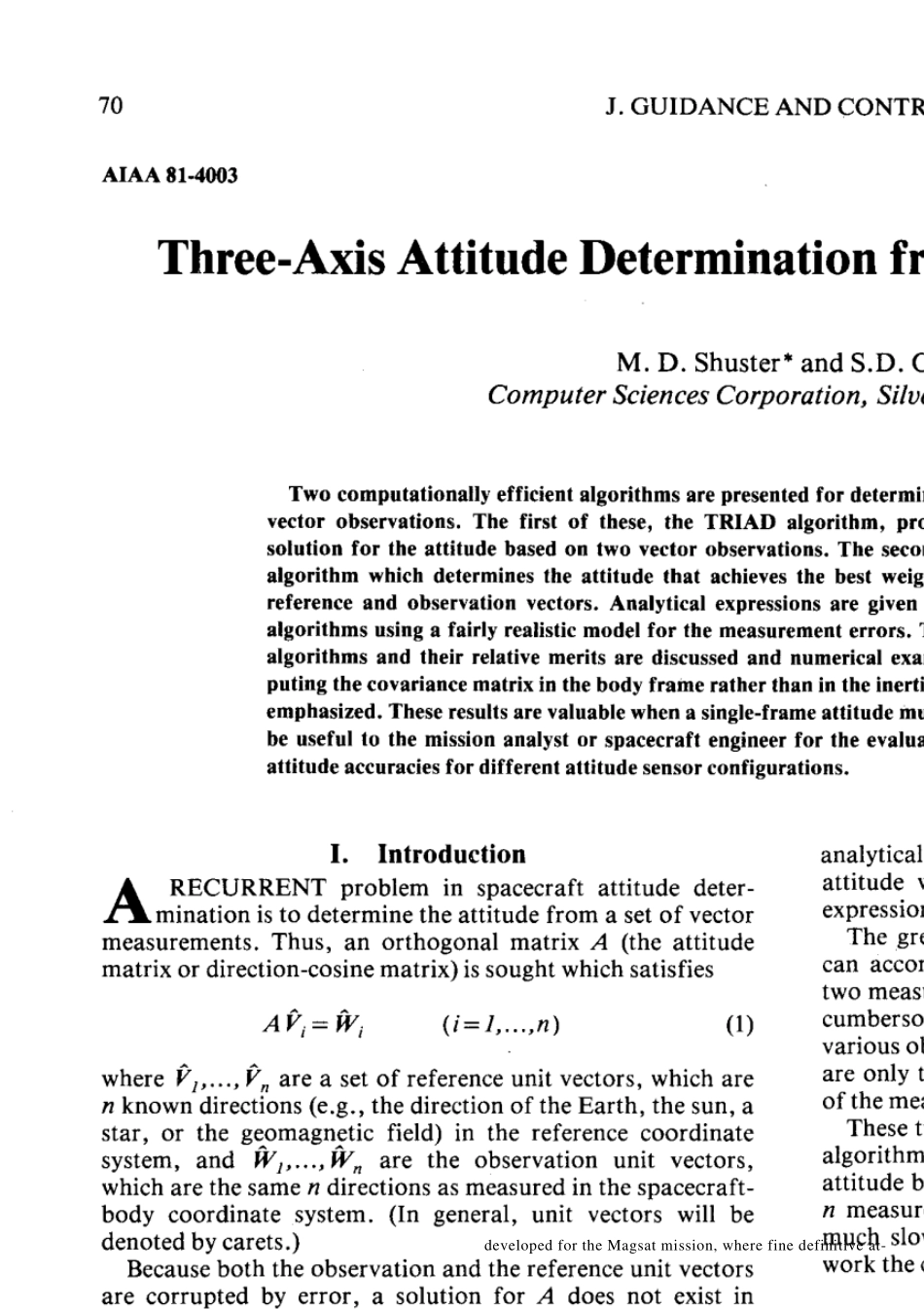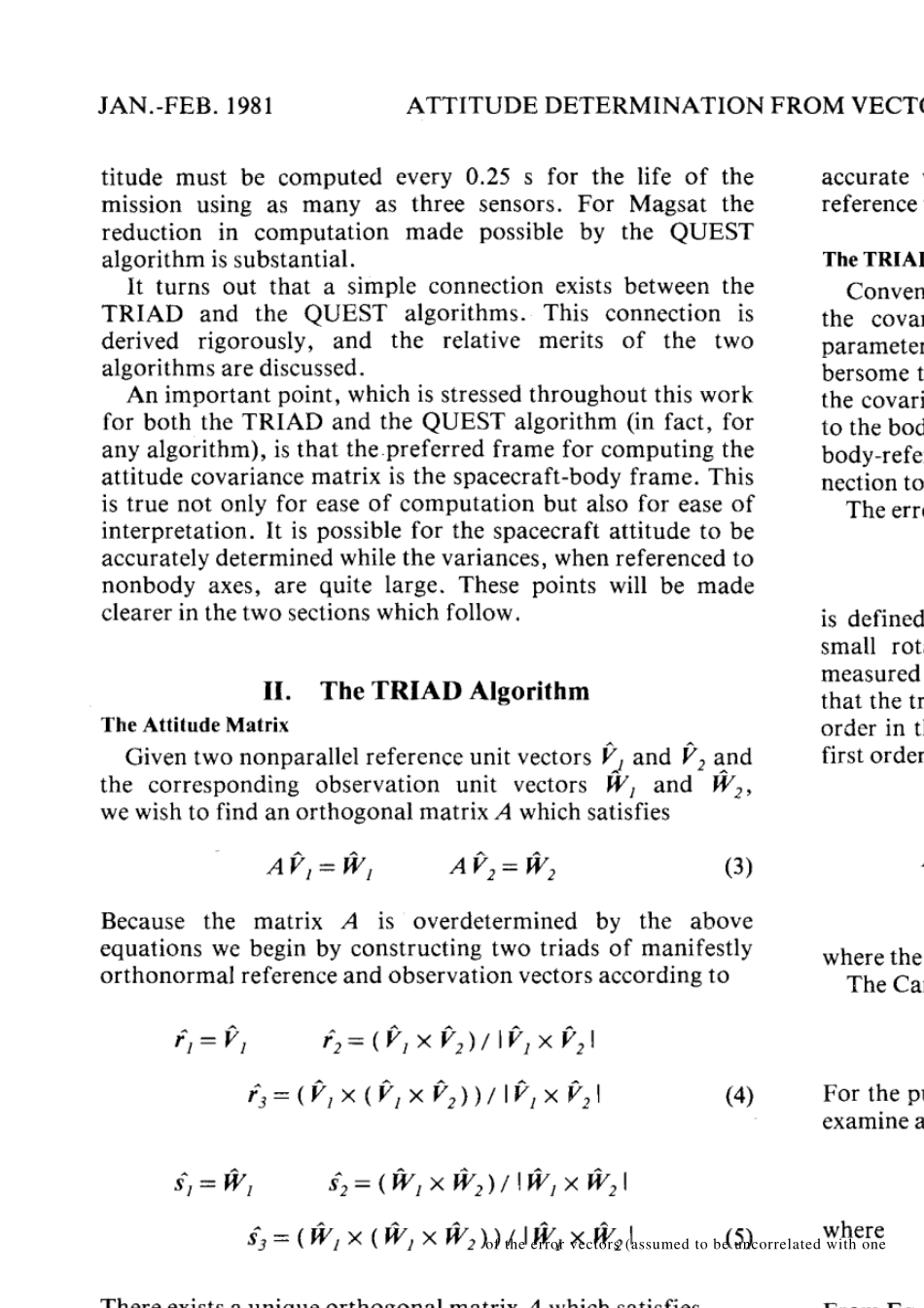70AIAA 81-4003J. GUIDANCE AND CONTROLVOL. 4, NO. 1Three-Axis Attitude Determination from Vector ObservationsM. D. Shuster* and S.D. OhtComputer Sciences Corporation, Silver Spring, Md.Two computationally efficient algorithms are presented for determining three-axis attitude from two or morevector observations. The first of these, the TRIAD algorithm, provides a deterministic (i.e., nonoptimal)solution for the attitude based on two vector observations. The second, the QUEST algorithm, is an optimalalgorithm which determines the attitude that achieves the best weighted overlap of an arbitrary number ofreference and observation vectors. Analytical expressions are given for the covariance matrices for the twoalgorithms using a fairly realistic model for the measurement errors. The mathematical relationship of the twoalgorithms and their relative merits are discussed and numerical examples are given. The advantage of com-puting the covariance matrix in the body frame rather than in the inertial frame (e.g., in terms of Euler angles) isemphasized. These results are valuable when a single-frame attitude must be computed frequently. They will alsobe useful to the mission analyst or spacecraft engineer for the evaluation of launch-window constraints or ofattitude accuracies for different attitude sensor configurations.I. IntroductionA RECURRENT problem in spacecraft attitude deter-mination is to determine the attitude from a set of vectormeasurements. Thus, an orthogonal matrix A (the attitudematrix or direction-cosine matrix) is sought which satisfiesA V; =(Dwhere F;,..., Vn are a set of reference unit vectors, which aren known directions (e.g., the direction of the Earth, the sun, astar, or the geomagnetic field) in the reference c...


